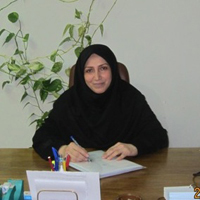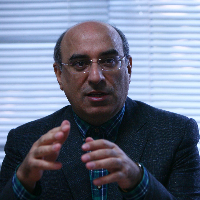Analysis of Key Effective Factors on Reduction of Quality of Life Around Downtown Commercial Areas Case Study: District 12 of City Tehran
The central part is the identity of a city and due to multiple urban functions, it is the best representative of human culture. However, uncontrolled expansion of the cities has caused a number of issues and problems. In the past, urban centers were the residence hubs in addition to being a place for events and gatherings, spending time and civic interactions, but over time, some of these activities have moved from the centers to the periphery and subsequently, the population habitation in surrounding areas has gradually led to social, economic and physical decline in urban centers. As long as, Functionalist approaches business centers and efficient families leave the centers in favor of the suburbs and poorer households with weak social and economic bases and abandoned property migrants choose the centers for housing, many characteristics of decline and decline such as high unemployment, low skill level, poor housing conditions, poor and unusual social environment, high density and severe social damage, etc. are brought to the center. Positivist philosophy, modernist planning, geometric typology, hardware engineering all created the conditions for the pure economic, social, and physical characteristics of urban centers to disappear and the weakness of policies of reconstruction and habitation of residents, job opportunities and housing development priorities in other urban areas and the lack of attention to intermittent development exacerbated the decline in quality of life in urban centers. The central part of Tehran is no exception to this rule. The bazaar, which was once considered as the backbone of the city, after the period of modernization with the rapid growth of urbanization in the second Pahlavi period was neglected. District 12, with the area of Tehran Bazaar and adjacent residential areas, has lost one third of its population during 1980-81. Various groups living in this area, especially higher-income families, have left the city center to live in better-equipped and modernized areas of north of the city, and immigrants and low-income families have replaced some of these families. The available data show that the northern part of Tehran bazaar belonged mostly to low-income groups of bazaar merchants and other urban groups. In recent years, one of the new approaches that has been considered in responding to this issue is the notion of quality of life, which in addition to objectivity and external manifestations, also attends mental and internal vision in planning. Although various studies have been conducted on quality of life, but due to 1) lack of comprehensive studies in all aspects of quality of life and 2) lack of causal relationships between variables affecting quality of life with emphasis on the commercial sector of the city, this study is necessary and it is also an innovative aspect of this research. Therefore, the purpose of this study is "analysis of causal relationships and identifying key factors affecting the reduction of quality of life around the city's commercial centers" in the study sample.
This research is applied one in terms of purpose and descriptive-analytical in view point of nature. The methods of data collection are quantitative. In this research, at the first, indicators were extracted from theoretical foundations, only repetitive indicators in relation to quality of life have been used. After determining the criteria and indicators that reduce the quality of life in the first stage of Delphi, these indicators were provided to a group of experts to confirm their validity according to the local conditions of Tehran's 12th district, on this basis a number of indicators were eliminated and some were added and in the continuation of the work for more validity in the form of a matrix of 27 x 27 were provided to 19 experts for the survey. Variables that can be used to analyze the disturbance of the balanced relationship and spatial dialectic in this part of the city and according to other sources and interviews with experts, the binary relation of these variables is measured and analyzed during research.
In both direct and indirect relationships resulting from MIC MAK software, macro and institutional policies are at the first level, policies that stem only from macroeconomic trends and not the public utility, such as inappropriate gentrification and renovation policies. In worn-out textures, the development of the service sector and the decline of industrial and workshop activities, the inefficiency of the planning institution at the national level, unproductive capitalism, rapid population growth in recent decades, the uncontrolled expansion of Tehran, market trading land and rent in the northern and western regions of the city, inefficiency of the planning institution at the national level, inefficiency of land management policies, lack of services in urban plans, lack of accountability in Tehran, inappropriate housing policies at the national level and Local, lack of services in urban plans, rapid migration in recent decades and lack of accountability in Tehran lead to the disruption of balance and the emergence of inequalities and classification of society, and finally reduce quality of life.
The results show that according to the indirect relations matrix, the variables of "policy inefficiency", "unproductive capitalism" which are managerial and institutional indicators, are recognized as key variables to improve or reduce the quality of life in the city center. These policies should be given priority and the proposed solution to this issue is to pay attention to urban regeneration policies in the region, based on the comprehensiveness of the view of these policies and the use of the capacities and potentials of the region. Public oversight and inter-organizational communication should be considered in the planning and implementation of urban programs
- حق عضویت دریافتی صرف حمایت از نشریات عضو و نگهداری، تکمیل و توسعه مگیران میشود.
- پرداخت حق اشتراک و دانلود مقالات اجازه بازنشر آن در سایر رسانههای چاپی و دیجیتال را به کاربر نمیدهد.




